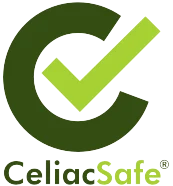Navigating the Gluten-Free Market: How Manufacturers Ensure Safe and Delicious Products
In recent years, the market for gluten-free products has seen remarkable growth. With more and more people being diagnosed with gluten intolerance and celiacs, the demand for safe and tasty gluten-free options has skyrocketed. This surge means there’s a critical need for products that not only avoid gluten but also deliver on flavor. However, ensuring these products are safe and delicious is no small feat. A gluten free manufacturer must adhere to strict safety protocols to prevent cross-contamination while innovating with ingredients and recipes to ensure their products taste great. This dual focus on safety and taste is essential to meet consumers’ expectations when looking for reliable and enjoyable gluten-free choices.
Understanding Gluten-Free Requirements
Gluten sensitivity and celiac disease are severe illnesses caused by consuming gluten, a protein present in grains such as barley, wheat, and rye. Even tiny amounts of gluten may trigger a reaction that damages the small intestine in people with celiac disease, resulting in various health consequences ranging from gastrointestinal issues to nutrient deficiencies. Gluten sensitivity, while less severe than celiac disease, can produce discomfort and other issues that interfere with daily life.
For a gluten-free manufacturer, understanding these conditions is crucial. It’s not just about removing wheat from their products; it requires a thorough and meticulous approach to ensure no gluten sneaks in at any production stage. This means careful sourcing of ingredients, rigorous cleaning of equipment, and continuous testing to prevent cross-contamination. By taking these comprehensive steps, manufacturers can deliver truly gluten-free food that is safe for their customers. This dedication is vital in providing peace of mind and allowing people with gluten sensitivities to enjoy their meals without worry.
Ensuring Safety in Manufacturing
One of the biggest challenges for a gluten-free manufacturer is preventing cross-contamination. To tackle this, manufacturers implement stringent protocols, like dedicating separate facilities or production lines solely for gluten-free products. This means that every step of the production process, from sourcing raw materials to packaging, must be meticulously monitored to ensure no gluten sneaks in. It’s a detailed and careful operation, but it’s essential to keep gluten-sensitive consumers safe.
Testing procedures are also critical to this process. A gluten free manufacturer frequently uses both in-house and third-party testing to ensure that their goods fulfill the FDA limit of less than 20 parts per million (ppm) of gluten. These tests are performed at multiple stages, ensuring the products remain gluten-free from start to finish. By adhering to these rigorous standards, manufacturers can confidently label their products as gluten-free, providing peace of mind to their customers and ensuring their safety.
Enhancing Taste in Gluten-Free Products
Creating gluten-free products that taste great is both an art and a science. Traditional baking relies heavily on gluten for structure and texture, which is why making gluten-free bread and pastries can be so challenging. A gluten-free manufacturer often uses innovative ingredients like rice flour, almond flour, and xanthan gum to mimic these properties. These alternatives help provide the necessary texture and stability, making gluten-free products enjoyable to eat. Techniques such as using natural flavors and enhancing moisture content also play a crucial role, ensuring that the end product is not just safe but also delicious.
Balancing health benefits with great taste is the ultimate goal for any gluten-free manufacturer. It’s not enough for a product to be free of gluten; it also has to be something people look forward to eating. This means finding the right mix of ingredients and methods to deliver both nutrition and flavor. By continually experimenting and refining recipes, manufacturers strive to create gluten-free foods that do not make consumers feel like they’re missing out. The result is a range of products that cater to dietary needs without compromising on the joy of eating.
Consumer Tips for Choosing Gluten-Free Products
Navigating the gluten-free market can feel overwhelming, but there are some simple tips to make it easier. By being informed and paying attention to key details, you can make safer and more satisfying choices. Here are a few tips to guide you:
- Read labels carefully: Look for products that are certified gluten-free, as this means they have been tested and fulfill tight guidelines. These certificates indicate that the product has passed thorough testing to assure its safety.
- Identify trustworthy brands and certifications: Familiarise yourself with brands that have a reputation for delivering safe and delicious gluten-free food. Organisations such as the Gluten-Free Certification Organisation (GFCO) and the Celiac Support Association (CSA) issue certifications that are credible quality indicators.
- Check online reviews and seek recommendations: Reading reviews and getting recommendations from fellow gluten-free consumers can help you find the best options available. Benefit from the experiences of others to discover safe and delicious gluten-free products.
The rise in gluten-free products has provided much-needed options for those with gluten intolerance and celiac disease. A gluten free manufacturer plays a critical role in this market, ensuring their products are safe through stringent protocols and thorough testing. At the same time, they are constantly coming up with ways to improve the flavour and texture of gluten-free products. Understanding labels and identifying trustworthy brands can make the gluten-free journey smoother and more enjoyable for consumers. Supporting manufacturers who prioritize both safety and taste encourages the continued growth and improvement of gluten-free options. In the end, a collaborative effort between manufacturers and consumers is key to a thriving gluten-free market.














Leave a Reply